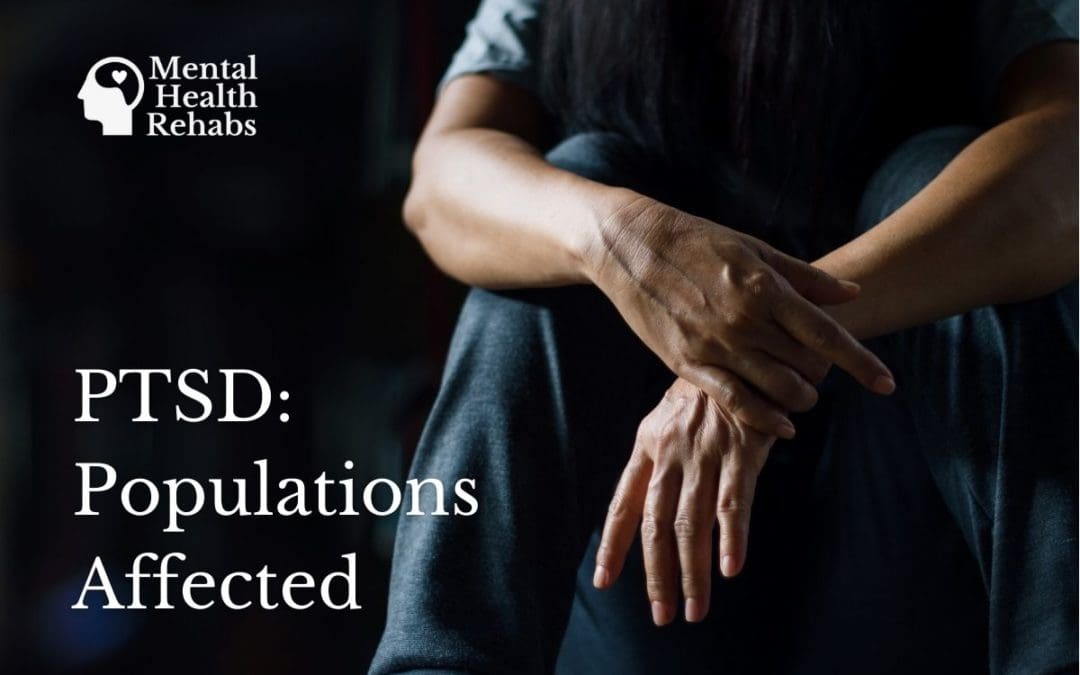Post-traumatic stress disorder, known as PTSD for short, is a condition that’s been known to mankind as far back as ancient history. This mental illness is one that has always been associated with combat and fighting–evident by the many past names of PTSD including shell shock, soldier’s heart, war neurosis, and combat fatigue. This is extremely misleading, however, as PTSD is not exclusive to those who have been involved in military combat. The reality is that PTSD is a lot more common than you might think. Join us in shattering the misconception that post-traumatic stress disorder only occurs to those in the military and learn what causes PTSD, as well as who PTSD can affect.
What is Post Traumatic Stress Disorder?
PTSD is one of the major types of anxiety disorders, a category that also includes obsessive-compulsive disorder (OCD), social anxiety disorder (previously known as social phobia), specific phobias, panic disorder, and generalized anxiety disorder. All of these mental illnesses involve the body having a malfunctioning stress response in some way.
In the case of PTSD, it’s when a person’s stress response doesn’t return to “normal” after their fight-or-flight instinct kicks in. The circumstances that caused this reaction are often severe traumatic events which can include:
- Childbirth experiences
- Domestic or child abuse
- Natural disasters
- Physical or sexual assault
- Serious health problems
- Torture
- Unexpected death of a loved one
- War (both combat or experiencing it as a civilian)
Symptoms of PTSD reflect that psychologically, they have not been able to move on from the event they experienced:
- Re-experiencing the traumatic event as flashbacks, nightmares, or intrusive thoughts
- Avoiding places or objects associated with the traumatic event to such a degree that they alter their behavior
- Are hypervigilant and may be easily startled, always on edge, or have trouble sleeping
- Have mood and cognitive symptoms
To be diagnosed with PTSD, symptoms must persist for at least a month and be severe enough to cause a disruption to a person’s day-to-day life.
How Common is PTSD?
Although the exact mechanism that causes post-traumatic stress disorder has yet to be determined, medical science has confirmed that PTSD develops as a direct result of trauma– which it turns out is pretty commonplace.
According to research, approximately, 60% of all men and 50% of all women experience at least one traumatic event during their life. However, that doesn’t mean that those people have PTSD. Only a small percentage will experience symptoms that persist long enough to qualify as post-traumatic stress disorder.
Who Can Have PTSD?
The truth is that anybody can have post-traumatic stress disorder: men and women, adults and children. There is no limit by gender or age. The reason PTSD is able to affect so many people is that it’s caused by trauma, and trauma is very subjective.
A traumatic experience isn’t about simply going through a situation or circumstance that’s widely understood to be unpleasant or unsettling, like being in a serious car accident. Rather, it’s determined by how the individual person psychologically processes those events–specifically, if it’s one that, as defined by the CDC, instills a sense of “horror, helplessness, serious injury, or the threat of serious injury or death”.
A situation that was traumatizing to one person might only be a bad memory for someone else. As such, there are countless ways in which a person might experience a traumatic event and thus, find themselves at risk of developing PTSD.
Who’s Most at Risk of PTSD?
Although men and women experience near-equal rates of trauma, there are imbalances in the demographics of who PTSD affects. Women are much more likely to have it, with 10% of women having PTSD compared to only 4% of men. The reason for such a disparity is believed to be caused by differences in:
- Type of trauma: Women are more likely to experience sexual-related traumas such as sexual assault, rape, or child sexual abuse. Men, on the other hand, are more likely to experience physical assault or witness death and serious injury.
- Coping strategies: During times of extreme stress, women rely on the emotional support of others but may feel rejected or abandoned if they don’t receive the support they need at the moment.
Other factors that may increase a person’s likelihood of developing PTSD include those with a history of mental illness or substance abuse, or having experienced multiple of the types of traumatic events listed above.
Fortunately, there are several possible PTSD treatment options that can help individuals manage symptoms and improve their quality of life. Find a mental health rehab near you to talk to a professional about potential medications and therapy options that are available.

